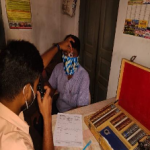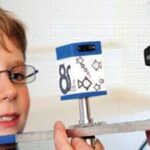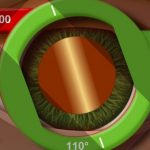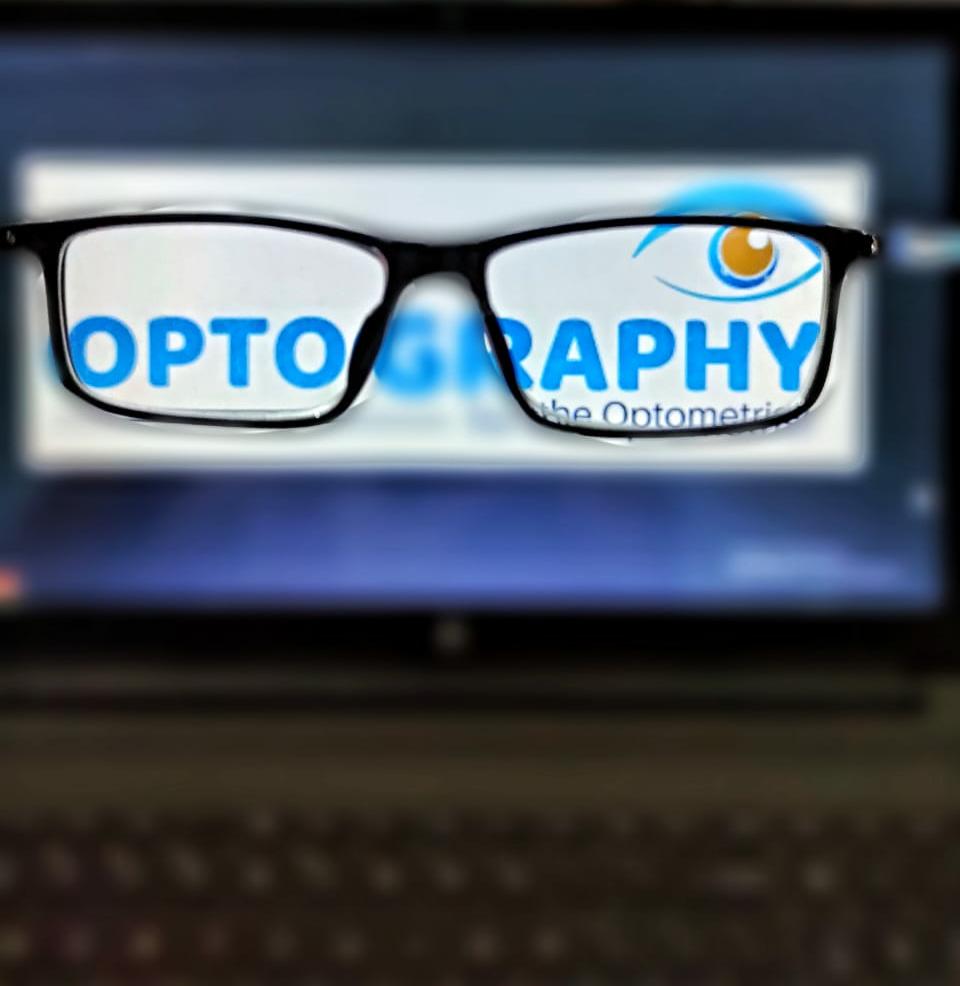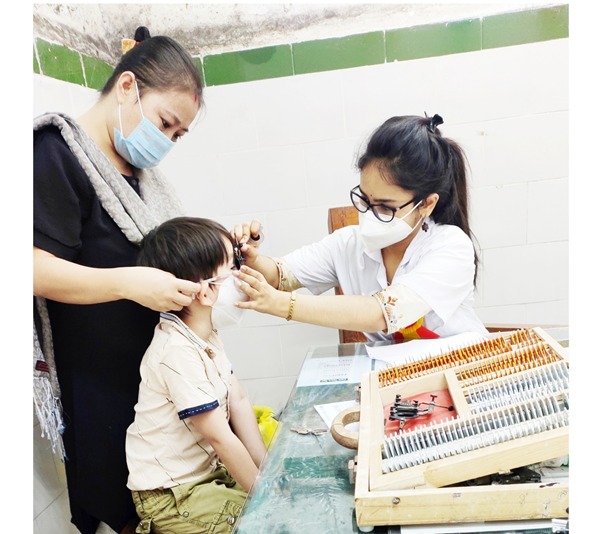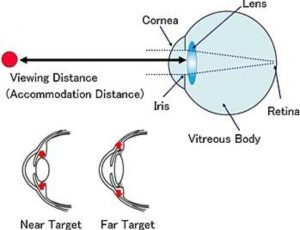Retinoscopy is an objective method of measuring the optical power. we use a retinoscope to illuminate the inside of the eye and to observe the light that is reflected from the retina. It does not depend on the patient’s vision or judgments. Retinoscopy is a technique used to evaluate the refractive error of the eye, particularly in patients who cannot communicate their vision needs, such as infants. It helps determine whether an infant may need glasses to correct conditions like nearsightedness (myopia), farsightedness (hyperopia), or astigmatism.
Broad Steps of Retinoscopy in Infants:
1. Preparation:
Environment: The room is usually dimly lit to allow the examiner to see the reflex (light reflection) from the retina.
Infant’s Positioning: The infant is typically held by a parent or assistant to keep them still. The child may sit on the parent's lap or
lie down, depending on what keeps them comfortable and steady.
Pupil Dilation: Eye drops may be used to dilate the infant's pupils. This makes it easier to see inside the eye and get a more accurate
measurement.
2. Procedure:
Retinoscope: The examiner uses a retinoscope, a handheld device that shines a beam of light into the eye. The retinoscope has a
mirror that the examiner can rotate, directing the light into the eye.
Observation of Reflex: As the light is moved across the pupil, the examiner observes the reflection (red reflex) from the retina. This reflex provides information about the refractive status of the eye.
o "With" and "Against"
Movements: Depending on how the light reflex moves in relation to the movement of the retinoscope, the examiner can determine whether the eye is
nearsighted, farsighted, or has astigmatism. o Neutralization: The examiner uses different lenses (trial lenses) to neutralize the movement of the light reflex. When the reflex is neutralized, it indicates the correct lens power needed for the infant’s refractive correction.
3. Assessment:
Estimating Refractive Error: The lenses that neutralize the reflex give an estimate of the infant's refractive error. The examiner may
use both eyes separately or compare the reflexes between the two eyes.
Checking for Anomalies: The procedure also helps in detecting any significant difference in refractive error between the two eyes (anisometropia) or other issues like strabismus (misalignment of the eyes).
4. Post-Procedure:
Interpretation: The results are interpreted to decide if the infant needs corrective lenses. If needed, a prescription is given, often for
glasses.
Follow-up: Regular follow-ups are important, especially as the child’s eyes continue to develop.
Challenges and Considerations
Cooperation: Infants are not always cooperative, so the examiner must be skilled in managing their movement and attention.
Accuracy: The accuracy of retinoscopy can be influenced by factors like the child's movement, the examiner’s experience, and whether the child’s pupils were adequately dilated.
Long-term Monitoring: Refractive errors in infants can change as they grow, so ongoing monitoring is essential.
Why Retinoscopy is Important in Infants
Early detection of refractive errors is crucial for preventing amblyopia (lazy eye) and ensuring proper visual development. By identifying and correcting vision problems early, retinoscopy helps support the child’s visual and cognitive development.
Properly addressing refractive errors at an early stage helps support normal visual development and can prevent more serious issues later in life.
Infant’s; eyes are still developing, and their refractive status can change rapidly. Regular retinoscopy allows for ongoing monitoring of this development, ensuring that any changes in vision are addressed promptly.
Retinoscopy is a non-invasive, safe, and quick procedure, making it suitable for use in infants. This allows healthcare providers to
assess vision without causing significant stress or discomfort to the child.
Retinoscopy provides a baseline assessment of an infant’s visual health, which can be used for future comparisons. This baseline is crucial for tracking changes and identifying any emerging issues as the child matures.
Conclusion
Retinoscopy is a vital procedure in assessing the refractive status of infants and young children, who may not be able to participate in other forms of vision testing. The procedure involves shining a light into the eye and observing the reflection (reflex) off the retina, which helps determine the refractive error. Here are some key conclusions regarding retinoscopy in infants:
Retinoscopy is a non-invasive, safe, and quick procedure that can be performed on infants with minimal discomfort.
It is crucial for the early detection of refractive errors such as myopia, hyperopia, and astigmatism, which, if left untreated, can lead to amblyopia
(lazy eye) or other vision problems.
When performed correctly, retinoscopy provides reliable and objective measurements of refractive error, which is essential for prescribing glasses
or other corrective measures.
Performing retinoscopy on infants can be challenging due to their limited ability to fixate on a target and potential restlessness. Skilled practitioners are required to obtain accurate results.
Cycloplegic retinoscopy, where eye drops are used to temporarily paralyze the accommodation reflex, is often necessary in infants to obtain accurate measurements, as their accommodative power can interfere with results.
Regular follow-up is important as the refractive status of infants can change as they grow. Monitoring ensures that any necessary adjustments to
treatment can be made in a timely manner.
Retinoscopy plays a key role in preventive pediatric eye care, helping to ensure that infants develop healthy vision and avoid complications that
could impact their quality of life. In conclusion, retinoscopy is an essential tool in pediatric ophthalmology, providing the foundation for early intervention and the promotion of healthy visual development in infants.



